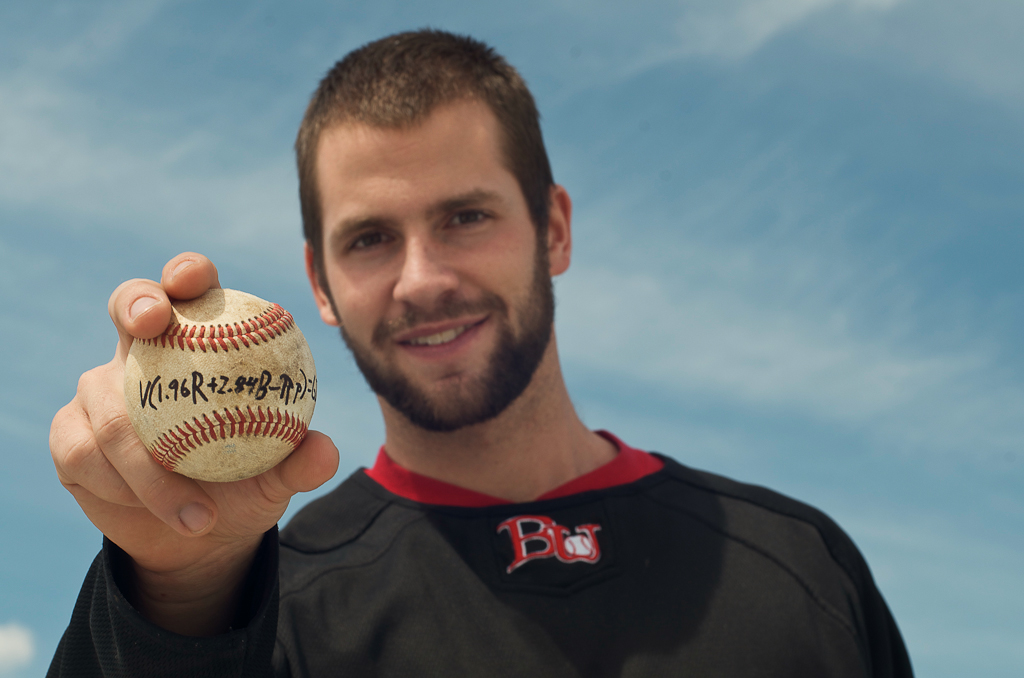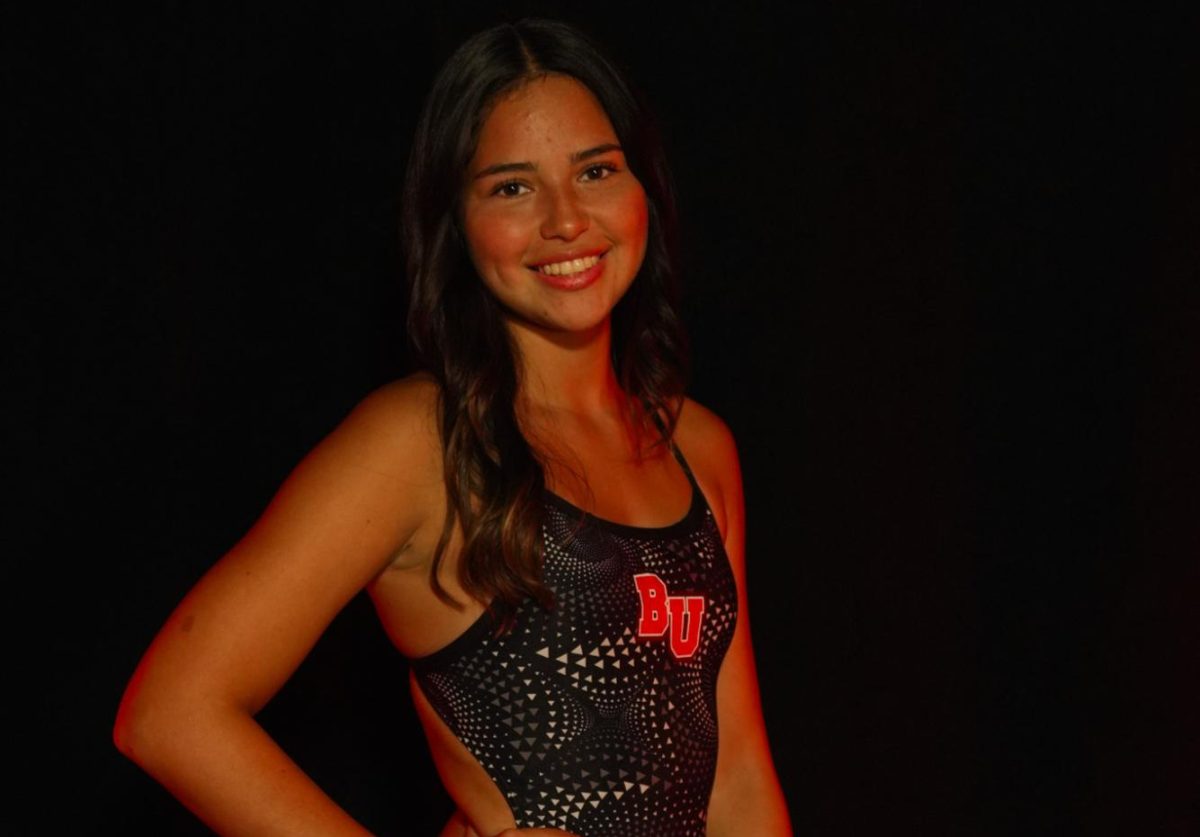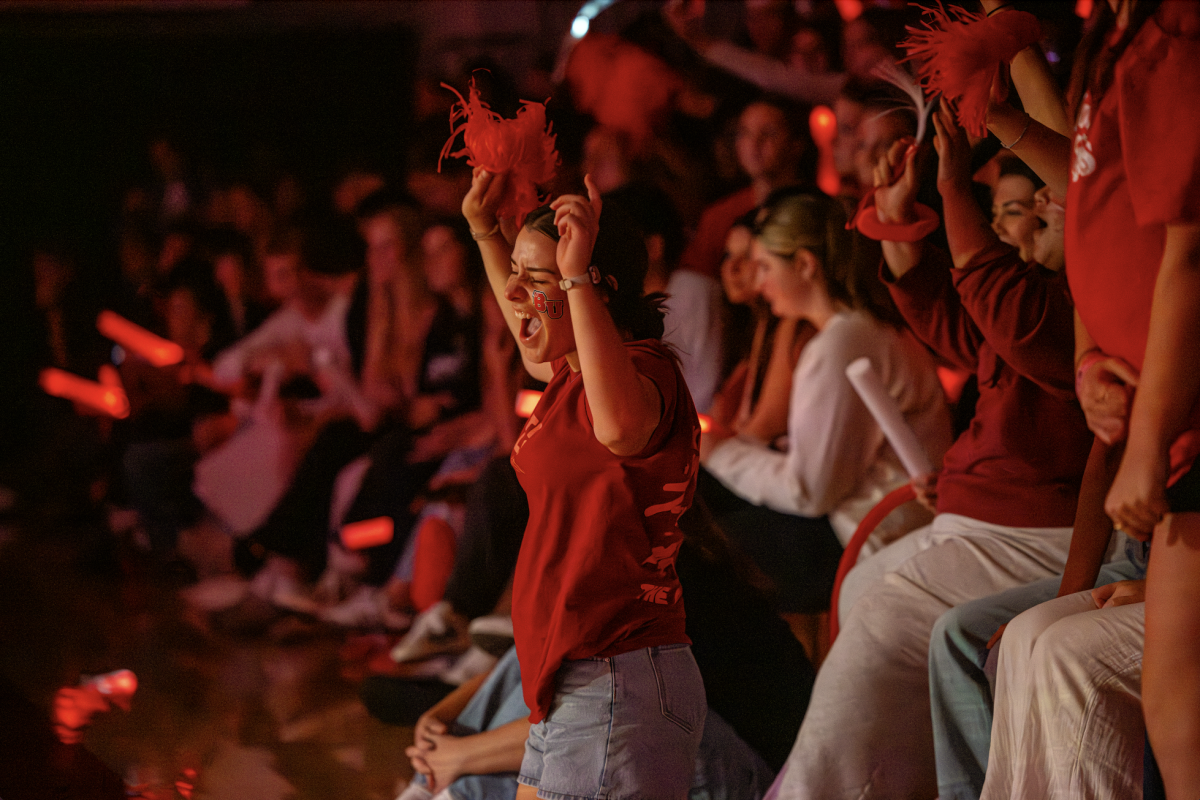
Senior Jarvis Greiner shows off his formula for evaluating curveballs. His potential game-changing idea is being considered for purchase by professional teams as well as Sports Illustrated and has given him a way to stay close to baseball. | Jessica Lindner/THE CHIMES
We have all heard of a fastball and how it is measured by miles per hour. But what is a curveball and how is it measured? A curveball is a type of pitch in baseball that is thrown to dive into a downward path as it approaches home plate; and up until this point, there is no way to measure it.
Biola senior film major Jarvis Greiner had always thrown around the question of what a good curveball was and recognized the need for a formula that would help define this. As a young boy, many of his days and nights were spent with his dad talking about the philosophy behind baseball and his interest in the game had always gone far beyond just playing it. With a new idea in hand, Jarvis went to work for two months brainstorming, jotting down ideas and creating a formula that would do just this, measure a curveball.
Greiner uses class to develop his idea
A statistics class with Biola professor Jason Wilson proved to be very rewarding in his journey to get the word out about it. Jarvis used this formula as an extra credit project, where Wilson first read it. Wilson found the numbers to be strong and accurate and ended up helping him publish his theory with Chance Publishers with California State University Fullerton.
In the past two years since the formula was originally created, numbers have been tweaked, more than 3,000 curveballs have been tested, and Greiner has come up with a correlation of .79 between the index that he created and a panel of judges who rate each of the pitches thrown. According to Greiner, there is still much to do, but they are definitely on their way to success. They need to get the correlation up to at least a .93, test a variety of different curveballs, and refine the entire project. Once they fine tune it, it can be patented and sold.
The word is definitely out there about this formula. Greiner has received phone calls from professional teams hoping to buy his formula and recently had an interview with Sports Illustrated. Something like this has the potential to change the game of baseball forever. If Greiner can get this formula to go global, it could become the primary way of evaluating curveballs. It could become an actual statistic for a pitch that has only had qualitative adjectives such as “dirty” and “nasty” to describe it and potentially change how coaches recruit new players.
In the past year, though, this formula has gained more meaning to Greiner. From the age of 4, he has always loved the game of baseball. He lived it, breathed it, and never anticipated being faced with the decision of having to leave his playing days behind him. Entering into his senior year of college, Greiner was caught between the decision to play for Biola’s team — which might put stress on his academics — or leave the world of baseball behind to focus on a different dream.
When it came down to decision time, Greiner realized that the chances of him playing professionally were not as promising as a different path might be and chose to quit the team to focus on his academics.
Greiner future in baseball tied to his formula
Fortunately for Greiner, he still had this formula to help him leave his stamp on the game.
“The possibility of me playing professional baseball was slim to none.” Greiner said. “The chances of this working out were more realistic.”
Despite the sadness that comes from watching a game that he is no longer physically a part of, Greiner rests a bit easier knowing that he still has a bit of something to hold on to that is viewed as important and respected. He created this formula not knowing that his time left playing would be cut short, but it has ended up providing him with an easier transition of leaving the game behind him.







